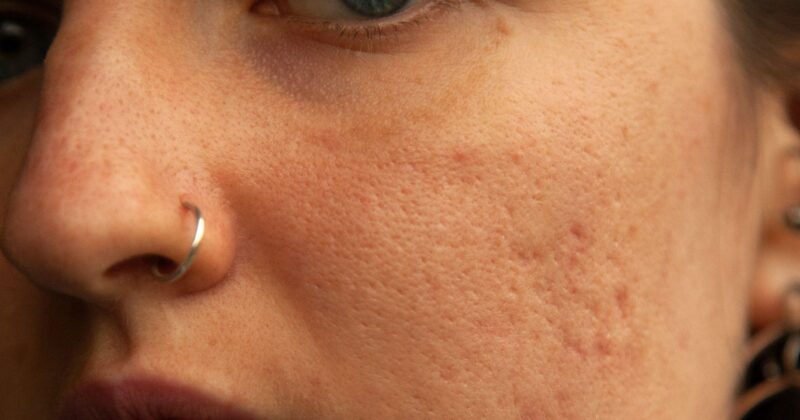For countless individuals around the world, pitting on the face – often resulting from acne scars, chickenpox, or other skin conditions – can be a significant cosmetic concern. Pitting, also known as atrophic scars, are recessed scars that can give the skin a dimpled or uneven appearance.
If you’re one of the many searching for a solution, you’re in the right place. We’ve compiled a comprehensive guide on how to reduce the appearance of these scars and achieve smoother skin.
The Types of Atrophic Scars
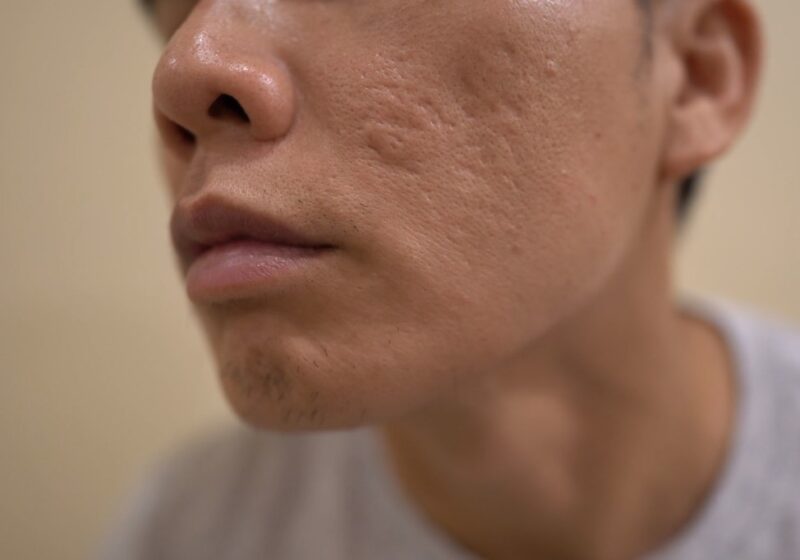
Before we delve into treatments, it’s crucial to understand the different types of atrophic scars:
Ice Pick Scars
- Description: Deep, narrow scars that appear like punctures from an ice pick.
- Common Locations: Cheeks and nose.
Boxcar Scars
- Description: Wide, U-shaped scars with sharp edges.
- Common Locations: Cheeks and temples.
Rolling Scars
- Description: Wide scars with rounded, sloping edges, giving skin a wavy appearance.
- Common Locations: Widespread across the face.
Over-the-counter (OTC) Solutions
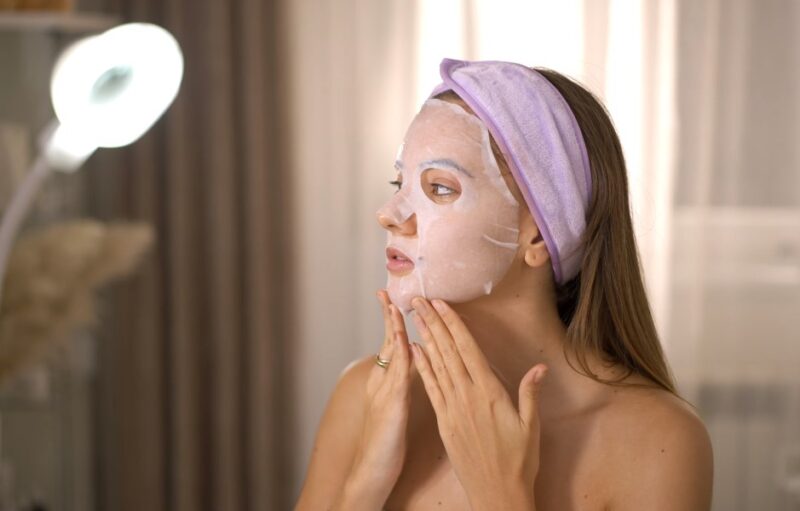
For those seeking immediate, cost-effective solutions, there are several OTC treatments available:
Retinoids
- Promote collagen production.
- Speed up cell turnover.
- Examples include retinol and adapalene gel.
Alpha Hydroxy Acids (AHAs)
- Exfoliate skin.
- Helps in removing dead skin cells.
- Examples include glycolic acid and lactic acid.
Silicone Gel or Sheets
- Hydrate the skin.
- Speed up healing and reduce the appearance of scars.
Professional Treatments
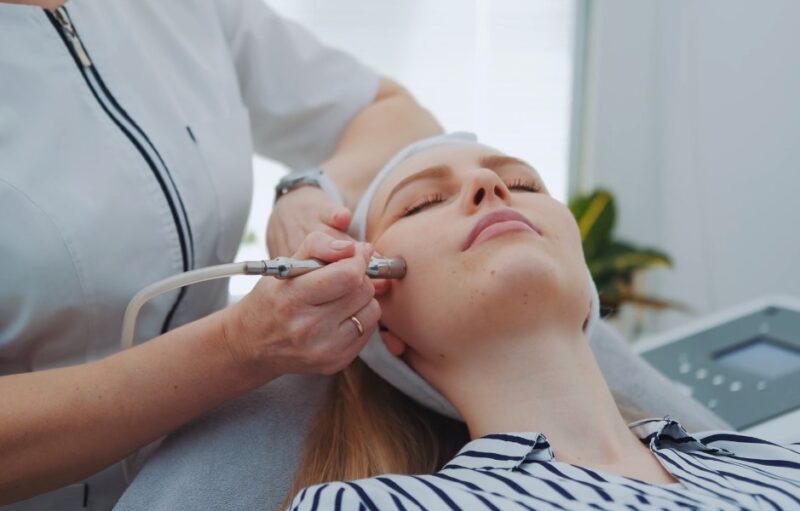
If OTC solutions don’t produce the desired results, several professional treatments are available:
Chemical Peels
How it Works:
- An acidic solution is applied to remove the top layer of the skin, promoting new skin growth.
- Strength and depth vary based on scar severity.
Results:
| Scar Type | Expected Improvement |
| Ice Pick | Moderate |
| Boxcar | Good |
| Rolling | Good |
Microneedling
How it Works:
- Uses tiny needles to puncture the skin.
- Promotes collagen production and skin regeneration.
Results:
| Scar Type | Expected Improvement |
| Ice Pick | Good |
| Boxcar | Very Good |
| Rolling | Very Good |
Laser Resurfacing
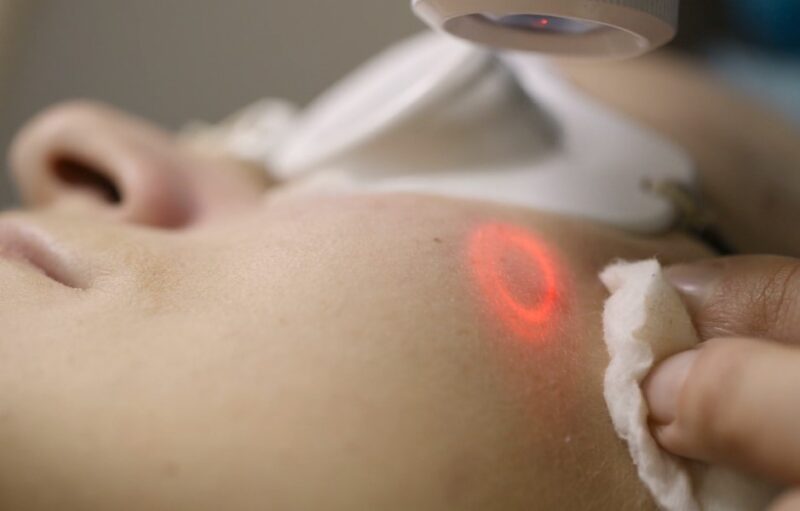
How it Works:
- High-intensity light targets the top layer of the skin, boosting collagen production.
- Types include ablative and non-ablative lasers.
Results:
| Scar Type | Expected Improvement |
| Ice Pick | Good |
| Boxcar | Very Good |
| Rolling | Excellent |
Fillers
How it Works:
- Injections are used to fill the scar’s indentation, leveling it with the rest of the skin.
- Common fillers include hyaluronic acid and collagen.
Results:
| Scar Type | Expected Improvement |
| Ice Pick | Temporary |
| Boxcar | Good |
| Rolling | Very Good |
Natural Remedies
Some individuals prefer holistic or natural approaches:
- Aloe Vera: Known for its healing properties.
- Honey: Acts as an anti-inflammatory and antioxidant agent.
- Vitamin E: Promotes skin healing. However, test on a small area first as it can sometimes cause a rash or worsen the appearance of scars for some people.
Preventative Measures
While addressing existing scars is important, prevention is just as crucial:
- Avoid picking at pimples or blemishes.
- Wear sunscreen to protect scars from darkening.
- Use non-comedogenic makeup and skincare products.
- Follow a consistent skincare routine.
Tips for Choosing the Right Treatment
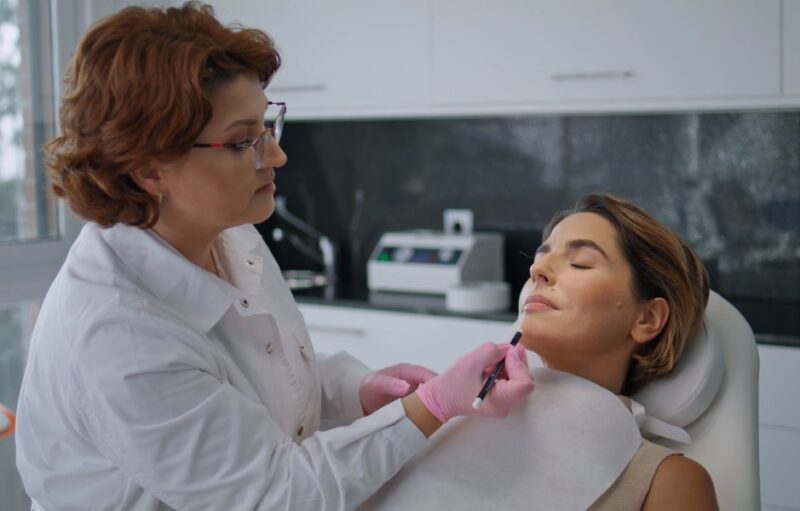
With the wide range of treatments available, it can be overwhelming to determine which one is best for your specific situation. Here are some considerations:
- Consultation: Begin with a dermatologist consultation. They can assess your skin type, the depth of scarring, and recommend the most effective treatments.
- Budget: While OTC and natural remedies tend to be more affordable, professional treatments can be costly. Determine a budget and look into treatments that fit within it. Remember, multiple sessions may be required for optimal results.
- Downtime: Some treatments, like laser resurfacing, might require downtime where the skin needs to heal. Consider your schedule and if you can afford the necessary recovery period.
- Longevity of Results: Some treatments, such as fillers, offer temporary solutions and may require periodic touch-ups, while others may provide more permanent results.
- Potential Side Effects: Be informed about potential side effects. For instance, while chemical peels can be highly effective, they might lead to temporary skin reddening, peeling, or even post-inflammatory hyperpigmentation in some cases.
Moreover, we have to mention that the most important part is to always consult with an expert about any issue you are facing, whether it is about Shingle Scars, pitting, or any other problem.
Taking Care Post-Treatment

After undergoing a treatment, post-treatment care can significantly influence the results. Some general tips include:
Follow Aftercare Instructions
If you opt for professional treatments, your dermatologist or skin care specialist will likely provide aftercare instructions. Adhere to them meticulously.
Stay Hydrated
Drinking water and keeping your skin moisturized can aid in quicker recovery and better results.
Avoid Direct Sunlight
Especially after treatments like chemical peels or laser resurfacing, your skin can be sensitive to the sun. Use a broad-spectrum sunscreen or protective clothing.
Avoid Harsh Skincare Products
Post-treatment, your skin might be more sensitive. Avoid products with harsh chemicals or exfoliants during the recovery phase.
Emotional and Psychological Aspects
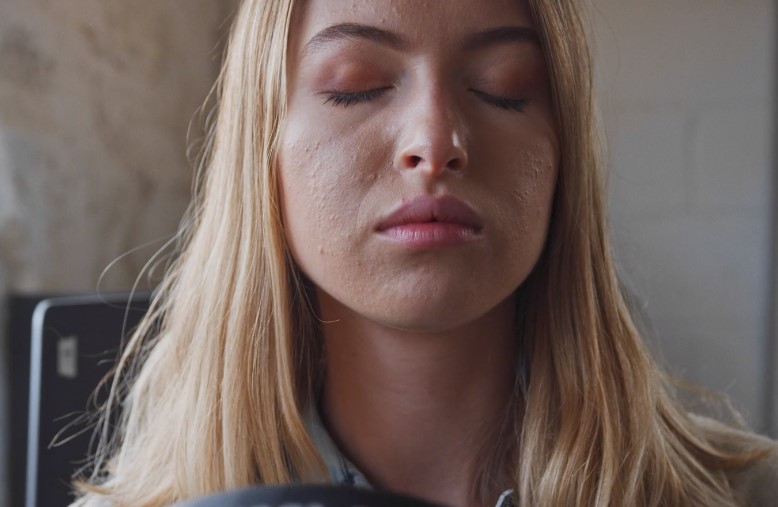
It’s essential to understand that while physical treatments can significantly reduce the appearance of scars, the emotional and psychological scars can sometimes linger.
- Seek Support: Joining support groups or talking to a therapist can help address any lingering self-esteem or body image concerns.
- Celebrate Small Wins: Every improvement, no matter how minor, is a step toward feeling more confident in your skin. Celebrate these milestones.
- Be Patient: Skin healing and improvement can be a gradual process. Be patient with your journey and understand that multiple treatments or prolonged time might be required to achieve the desired results.
The Importance of a Balanced Diet
While external treatments play a pivotal role, it’s equally essential to nurture your skin from the inside out. A balanced diet can work wonders in promoting skin health and aiding in the repair process.
- Vitamin C: Found in citrus fruits, strawberries, and bell peppers, this vitamin promotes collagen production, essential for skin repair and elasticity.
- Zinc: Foods like nuts, seeds, and whole grains are high in zinc, a vital mineral that aids in skin development and inflammation reduction.
- Omega-3 Fatty Acids: Found in fatty fish, flaxseeds, and walnuts, these fatty acids help maintain skin moisture and can reduce skin inflammation.
- Antioxidants: Fruits and vegetables are packed with antioxidants that combat free radicals, promoting healthier skin.
Routine Skin Examinations
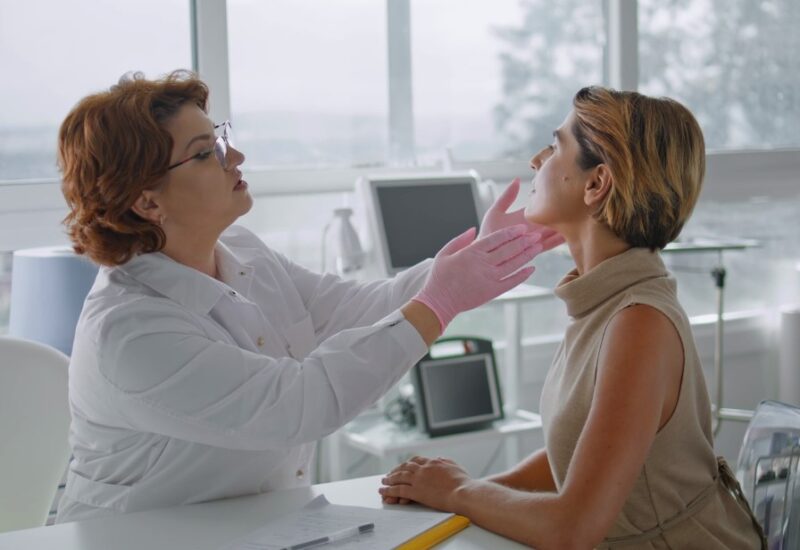
Regularly examining your skin can help you understand its patterns, notice any changes, and act timely.
Monthly Self-exams
Familiarize yourself with your skin’s landscape so you can detect any new scars, blemishes, or other abnormalities.
Annual Dermatologist Visits
Even if you’re not undergoing treatments, seeing a dermatologist annually can help catch any potential issues early and provide guidance on maintaining skin health.
Staying Updated on New Treatments
The field of dermatology is ever-evolving, with new treatments and technologies emerging regularly.
- Subscriptions: Subscribe to dermatological journals or magazines to stay updated on the latest advancements.
- Online Forums: Join online skincare communities where members often share their experiences and knowledge about the newest treatments.
- Consult Your Dermatologist: Your skin specialist will likely be aware of the latest treatments and can offer guidance tailored to your needs.
Testimonials & Real-life Experiences
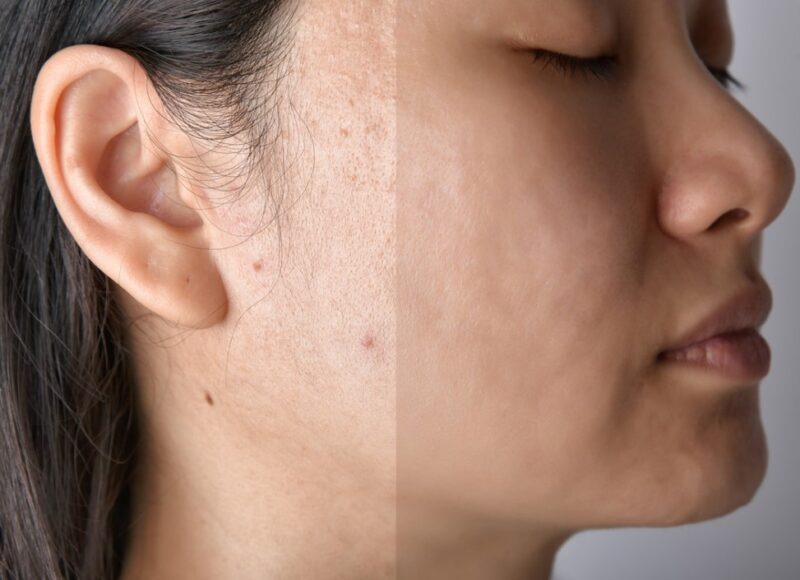
One of the most assuring ways to gain confidence in a particular treatment is by hearing others’ success stories.
Before and After Photos
Many clinics and skincare professionals showcase before and after photos of their patients. These can provide a realistic picture of what to expect.
Online Reviews
Websites, forums, and social media platforms can be a treasure trove of personal experiences and testimonials. However, always approach with a discerning mind as individual results can vary.
FAQs
How long does it typically take to see noticeable results from treatments for facial pitting?
The time frame for noticeable results varies depending on the treatment method. Over-the-counter solutions might show improvement in weeks to months. Professional treatments like laser resurfacing or microneedling might offer quicker results, often noticeable after a few sessions, which could span a few weeks to months.
Always consult with your dermatologist about what to expect for your specific situation.
Are there any potential allergic reactions to treatments for facial pitting?
Yes, some people may experience allergic reactions or sensitivities to components of treatments. For instance, certain chemical peels, creams, or even natural remedies could cause redness, itching, or swelling.
It’s essential to conduct a patch test (for topical treatments) or discuss potential allergies with your dermatologist before undergoing any procedure.
Can facial pitting recur after treatment?
While treatments can significantly reduce the appearance of existing pits, they don’t prevent new ones from forming due to future acne or skin conditions. Thus, consistent skincare and preventive measures are crucial to minimize the risk of recurrence.
How can I determine the depth and severity of my facial pits?
A dermatologist can use specialized tools and expertise to assess the depth and severity of facial pitting. This assessment can guide treatment recommendations and offer a clearer picture of what results to expect.
Are there any treatments that can be combined for better results?
Yes, in many cases, combining treatments can yield enhanced results. For instance, microneedling is sometimes combined with chemical peels or platelet-rich plasma (PRP) therapy. It’s vital to work with a dermatologist to determine the best combination for your skin needs.
How does age factor into the treatment and recovery process for facial pitting?
Age can influence skin elasticity, healing speed, and collagen production. Younger skin might regenerate faster and respond more robustly to treatments.
Older individuals might still see significant improvements but may require more sessions or longer healing times. It’s essential to set realistic expectations and discuss potential age-related factors with a dermatologist.
Final Thoughts
While it might seem daunting to tackle pitting on the face, modern skincare and technology offer a plethora of solutions to assist. Whether you’re seeking a home remedy, an OTC product, or a professional treatment, there’s likely a fit for your unique needs.
Remember, always consult with a dermatologist or skincare professional before undergoing any treatment to ensure it’s the right fit for you.

